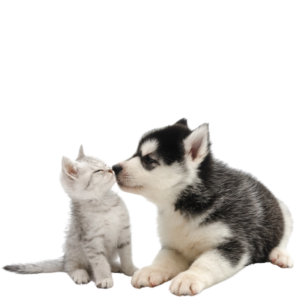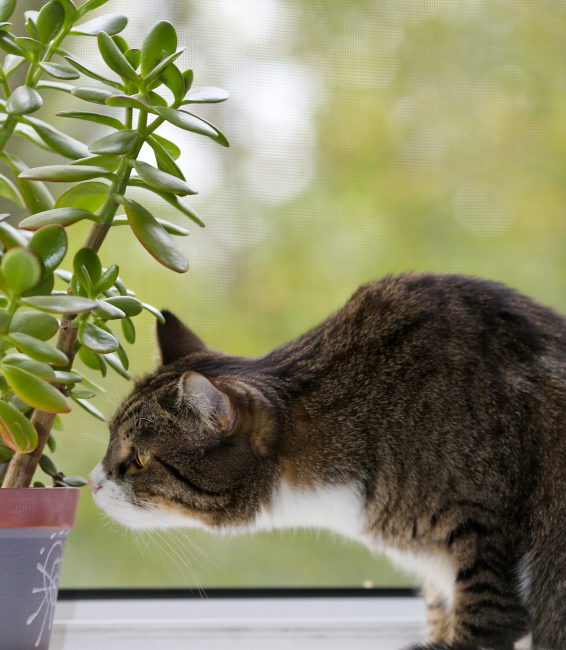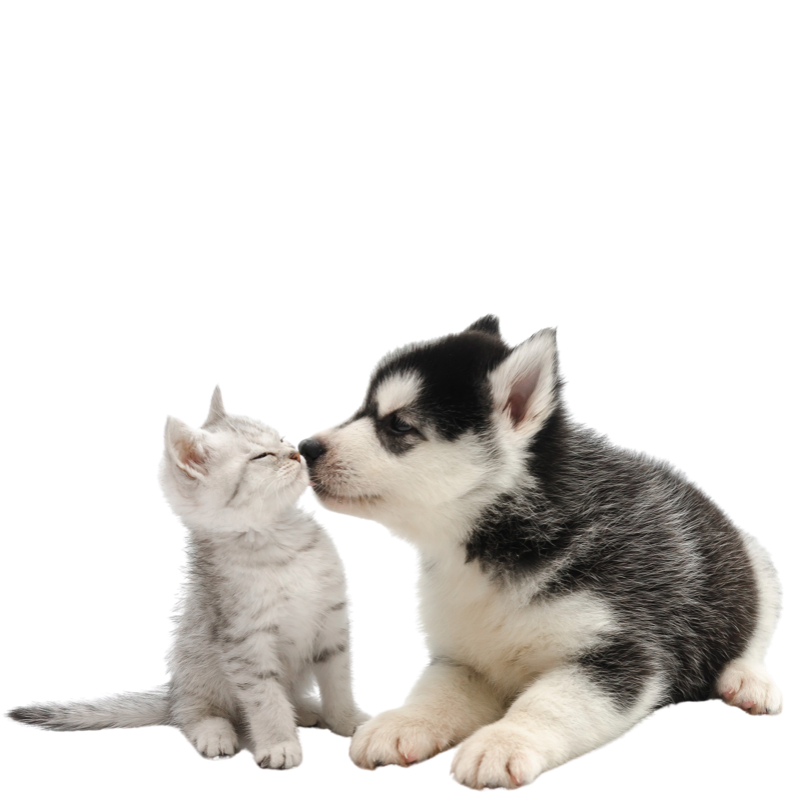Q: What is feline lower urinary tract disease?
A: Lower urinary tract disease or LUTD can occur in cats from the age of 1-10 years, and consists of 5 syndromes. The most common syndrome is FIC, or Feline Idiopathic Cystitis, which accounts for 55% of all cases. Other causes of LUTD include urolithiasis or stones ( 15-21%), urethral plugs (15-20%), anatomical defects ( 10%), behavioral issues (9%), cancer (1-2%), and urinary tract infection (1-2%). As cats age the most common cause of LUTD is infection, while in younger cats the risk of infection is low and the incidence of FIC increases.
Q: What the symptoms would my cat show if he/she had Feline Idiopathic Cystitis (FIC) ?
A: With FIC there are a constellation of urinary signs :
-blood in the urine( hematuria)
-pain and straining to urinate (dysuria)
-frequent urination of small volumes of urine ( pollakiuria)
-urinating outside of the litter box (periuria)
Some cats present with extreme abdominal pain, while others present as being unable to urinate at all.Symptoms can wax and wane.
Q: How do I know if my cat has FIC or another urinary problem?
A: Your veterinarian will examine your cat and suggest a number of diagnostic tests. These procedures include radiographs and ultrasound of the bladder, general wellness blood tests, urinalysis and culture and sensitivity of the urine. Generally a diagnosis of FIC is a diagnosis of elimination. In other words your veterinarian did not find stones, crystals, infection or tumors as a cause of the symptoms.Classically cats with FIC have a very bloody urine sample that is extremely concentrated.
Q: Do we know or understand the causes of FIC?
A: FIC is an inflammatory disease of the lower urinary tract in cats but also occurs in the human population. As the word “idiopathic” implies we do not know what the specific cause in cats is. The theory is that FIC is a psychoneuroendocrine disorder which involves abnormalities of the bladder, nervous system, and adrenal gland. In a nut shell, cats that suffer from FIC are theorized to have exaggerated nervousness , fear or aggression, but at the same time a decreased ability to deal with stress. FIC is the feline version of “stress can make you sick”. Cats with FIC are thought to have a defect in the protective mucus layer covering the lining of the bladder there by allowing urine to directly contact the bladder lining and cause pain and inflammation.
Q: Is FIC treatable and if so how?
A: Yes FIC is treatable, however, each cats will respond in different degrees to the treatment. the goal is to control the symptoms of the disease rather then to attempt to cure. The 4 most important pillars of treatment in this frequently frustrating disease are:
-water
-environmental enrichment
-diet
-medication
Q: What do you mean by environmental enrichment?
A: Environmental enrichment includes changes an owner can make in the cats surroundings to reduce stress. FIC cats are stressed by the presence of other animals, changes in their daily routine, changes in litter and litter location, changes in weather and separation anxiety when their owners are away.Owners can reduce “stressors” in their cats lives by :
– increasing the number of litter boxes
-situating litter boxes in quiet areas of the house
-changing litter frequently
-getting rid of covered litter boxes
-providing toys, scratch posts, cat climbing perches, feeding balls where cats have to “hunt” for their food.
Q: Why is water an important treatment in this disease?
A: The most important key to treating FIC is DILUTION DILUTION DILUTION! The more dilute you can make your cats urine the less painful the urine will be when it contacts the bladder lining. Cats, however, are poor drinkers so you may have to trick them into drinking large amounts of water. Some of the tips are:
-water fountains
-flavoring with fish juice or meat broth
-using large bowls with wide surface areas filled to the top
Q: How important is diet in treating FIC?
A: Diet is important for the same reason as water intake, because it allows you to make the urine more dilute.Using canned food with its high water content or adding water to dry food helps to dilute your cats urine. Royal Canin/Medi-Cal urinary S/O is a high salinity diet used to stimulate drinking, however if your cat has kidney problems or is elderly you may want to consult with your vet first. A new diet from Medi-Cal called Calm has been used successfully in the treatment of FIC mainly because its ingredients reduce stress and anxiety in most cats.
Q: What types of medication help in the treatment of FIC?
A: Although many drugs are effective in treating FIC, most veterinarians only use them as an adjunct to environmental enrichment and diet changes. Analgesics, antidepressants, and anti-anxiety medications have been used with varying degrees of success.
Q: What are some good references to help me learn about FIC?
A: “Indoor cat initiative” found at http://indoorpet.osu.edu/
http://www.veterinarypartner.com/Content.plx?P=A&S=0&C=0&A=612




